Fish are a wonderful and popular pet choice, and since their tanks are stationary, you can also use them to decorate your home. It may seem like all of the colorful fish are saltwater fish, but that's simply not true! There are some truly beautiful, most colorful freshwater fish species that will not only be an engaging pet but also add color and wonder to your home.
11 Colorful Freshwater Fish Species To Add To Your Aquarium
Peacock Cichlid
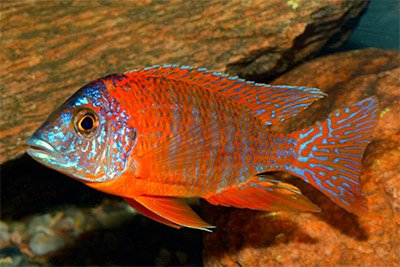
This fish is a gorgeous standout and comes in a variety of different colors. There are blue ones, bright yellow ones, and the whole spectrum of reds. They come from Lake Malawi, and their color varies based on what area of the lake they are native to. Some cichlids are a bit of a hassle, but Peacock cichlids are relatively easy to care for. They are semi-aggressive and require a large tank size of 60 gallons.
Electric Blue Acara
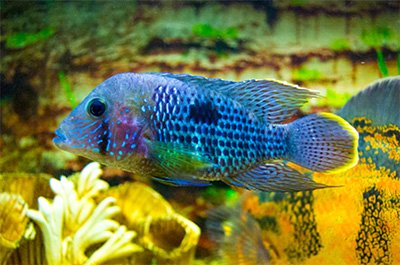
This is a stunning fish of metallic blue, with a burst of yellow in the ridge that runs along the top edge of their dorsal fins and caudal fin. These fish have a tranquil, peaceful nature and are great for beginner to intermediate fish owners. Natives to rivers and lakes in Central and South America, this species of fish can be kept together and placed in schools. A 30-gallon tank size is recommended, as it will give enough space for the fish to swim and be active.
Discus Fish
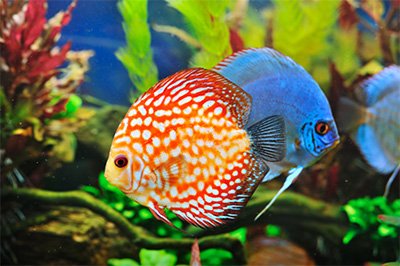
This beautiful fish is perhaps the most popular species of colorful freshwater fish. These tiny fish come in a wide variety of colors - bright green, blue, red, and yellow. You'll also find them with a wide variety of patterns, such as stripes and dots, and patches.
Discus fish are schooling fish by nature and are much happier when surrounded by a large group of their own kind. You can fill a tank with many different varieties of this peaceful species of fish or add other peaceful fish with it. However! They require very specific water conditions in their 50-gallon tank, and you will need to provide a complex diet for them to thrive.
German Blue Ram
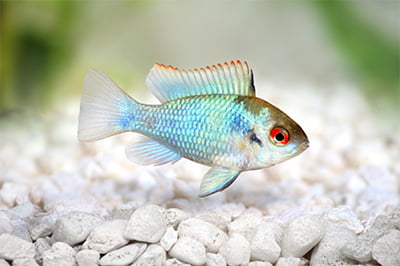
The German Blue Ram has probably one of the more unique patterns out there for freshwater aquarium fish. Some fish have spots, some fish have stripes, some fish are bi-color - but this unusual fish has it all going on! A long dark streak runs over bright red eyes. You'll also see a splotch of the dark at the front of their dorsal fin, making it almost look as if they're sporting a mohawk. Past those dark splotches, you'll find a wide assortment of bright colors and patterns, such as an orange with bright blue dots or yellow with purple streaks. A moderate tank size of 20 gallons suits them well.
Paradise Fish
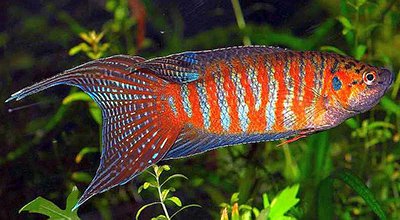
Paradise fish are simply beautiful. The most common variety has vibrant reds, bright orange, and true blues in thick stripes. While their colors are breathtaking, their long fins trail behind them as they swim about are what tip them over the edge into "beautiful." The tricky thing is that they're sometimes a pretty aggressive species. Keep a close eye on your tank if you add one of these fish to ensure that it's playing well with other species.
Electric Yellow Lab
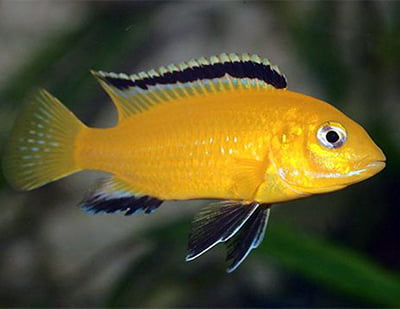
One of the cichlid species, this fish is certainly shockingly yellow. It has a black strip on its dorsal and anal fins, making it look not that, unlike a flashy racing car. Like other cichlid species, the Electric Yellow is semi-aggressive. This doesn't mean that it can't have tank mates, but just that you will have to be very particular about what other fish you put in the tank with it. Once you get the habitat right, this fish won't be challenging to care for.
Betta Fish
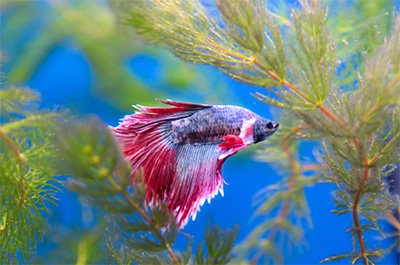
Bettas are by far the most popular freshwater fish species available due to their sheer beauty. With a wide variety of jewel-toned colors available and long, flowing fins, male Betta fish are found in many aquarium stores. They are, simply, gorgeous fish. However, they do require specific water parameters and can show signs of aggression by nipping the fins of other males from time to time. These are the first fish for many aquarists because if you have a home aquarium at least 5 to 10 gallons in capacity, your brightly colored fish will be happy.
Flowerhorn Cichlid
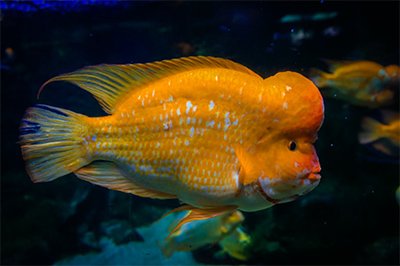
With both bright colors and an interesting shape, the territorial fish takes the cake. The nuchal hump - or large lump on their head - is very eye-catching, and they typically come in bright reddish pink with some white spots. Flowerhorns are smart little fish and are known to build a very close bond with their owners. However, they are aggressive - very aggressive. They also grow to reach a foot or longer. Because of this, you'll need an aquarium of at least 70 gallons.
Cherry Barb
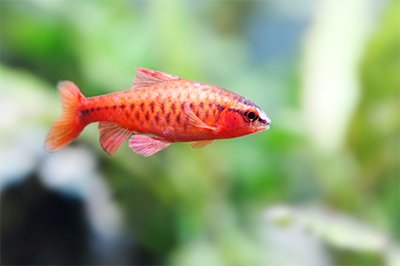
Another bright redfish, the Cherry Barb, is little, cute, and one of the easiest fish on this whole list to care for. You might get a specimen that's more of a bright, light red, and the most coveted specimens are deep and dark, almost a burgundy. These peaceful fish are great for beginners because they look tropical and exotic without all the hassle that actual tropical fish often require.
Zebra Danio
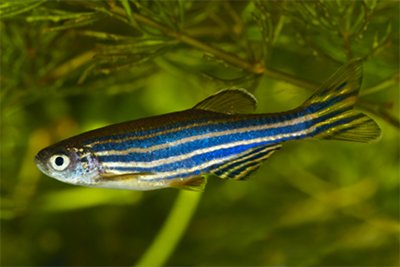
The Zebra Danio might not seem to be the most colorful fish on this list. However, because they are shoaling fish, they will swim around your aquarium in a group. The dark horizontal stripes on their bodies make a very mesmerizing effect as they dart from place to place en masse. These hardy fish can handle a wide variety of water conditions and play very nicely with other tank mates. They do well in a tank size of 10 to 15 gallons.
Fancy Guppies
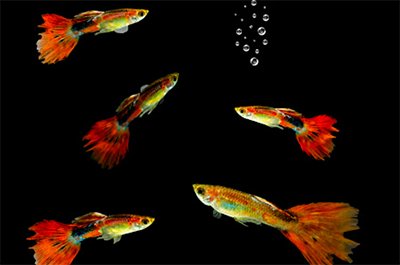
These popular fish have always been aquarium staples. Its body shape is somewhat similar to a Betta but slightly longer and thinner, with a fan-like caudal fin. They're hardy little fish, which gives you some leniency on tank size, and they're very easy to take care of. You'll find them in a large number of bright colors and patterns.

